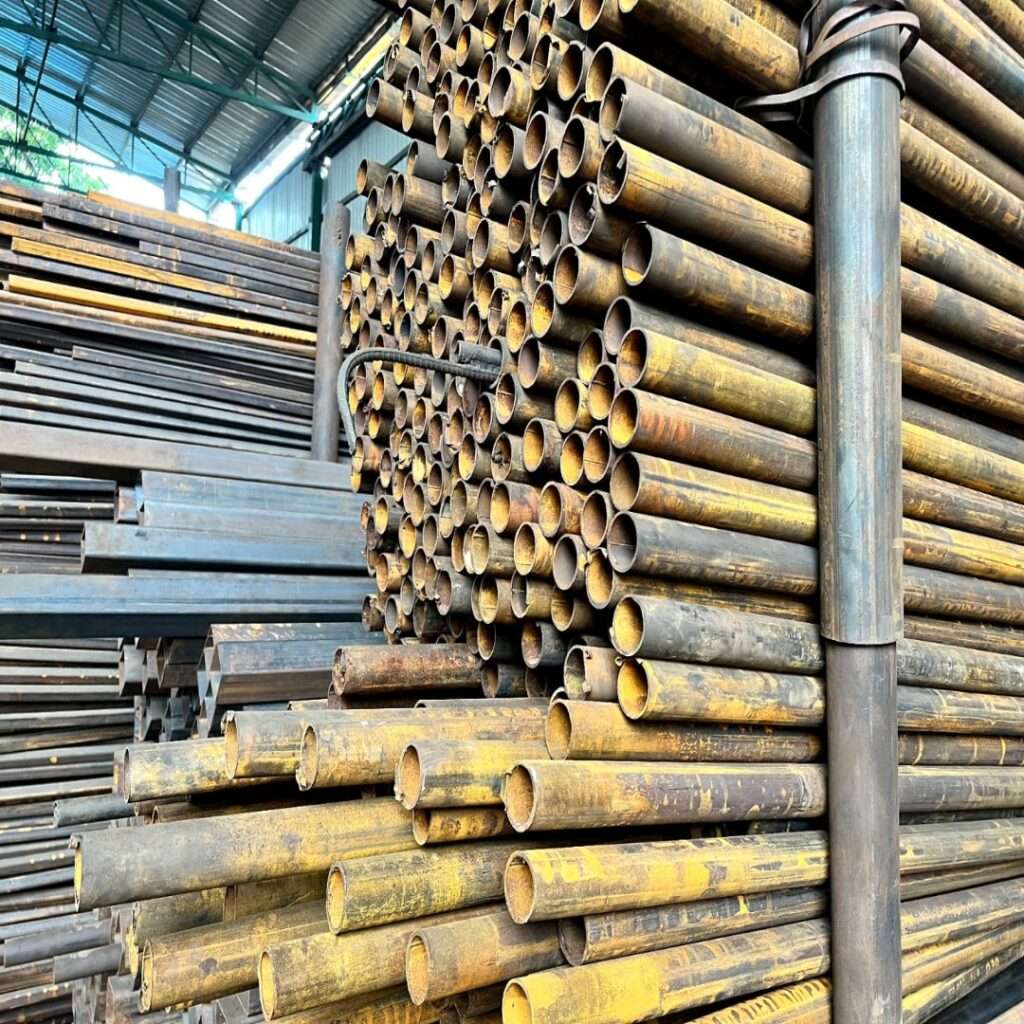
Introduction
In the realm of construction and industrial applications, understanding the weight of materials is paramount. When it comes to MS (Mild Steel) Pipes, their weight is a critical factor that influences everything from structural integrity to transportation and installation. Let’s delve into the intricacies of MS Pipe weight, exploring why it matters and how it is calculated.
Why Does MS Pipe Weight Matter?
• Structural Considerations:
In construction projects, whether it’s building a residential structure or a towering skyscraper, the weight-bearing capacity of materials is of utmost importance. MS Pipes form an integral part of these structures, contributing to their stability and strength.
• Transportation and Handling:
The weight of MS Pipes directly impacts the logistics of transportation and handling. Whether being transported to a construction site or within a manufacturing facility, knowing the weight helps in planning and executing safe and efficient logistics operations.
• Installation Planning:
During the installation phase, contractors and engineers need precise information about the weight of MS Pipes. This knowledge guides decisions related to equipment requirements, lifting mechanisms, and overall installation processes.
• Load Distribution:
Understanding the weight of MS Pipes is crucial for engineers and architects when designing foundations and support structures. Proper load distribution ensures that the entire system can withstand the stresses imposed by the weight of the pipes.
Factors Influencing MS Pipe Weight:
Nominal Bore Size:
The nominal bore size of the MS Pipe, which refers to its inner diameter, is a key factor. Larger bore sizes typically result in heavier pipes.
Wall Thickness:
The thickness of the pipe walls significantly contributes to its weight. Thicker walls provide increased strength but also add to the overall weight of the pipe.
Length of the Pipe:
The length of the MS Pipe is a straightforward factor. Longer pipes naturally weigh more than shorter ones. This is particularly crucial for transportation considerations.
Type of MS Steel
The specific type of mild steel used in the pipe influences its density, thereby impacting the overall weight. Different grades of MS steel may have varying weights for the same nominal bore size and wall thickness.
Calculating MS Pipe Weight:
The weight of an MS Pipe can be calculated using a simple formula:
Weight (kg) = (π/4) × Nominal Bore Size (mm)2 ×
(Outer Diameter (mm) – Inner Diameter (mm)) ×
Density of Mild Steel (g/cm3) × 0.001
In this formula:
π is a mathematical constant (approximately 3.14159).
The outer diameter and inner diameter are measured in millimetres.
The density of mild steel is typically around 7.85 g/cm³.
This formula takes into account the cross-sectional area of the pipe and the density of the material to provide an accurate estimation of the pipe’s weight.
Understanding the Weight Class of MS Pipes:
MS Pipes are often categorized into different weight classes based on their thickness. The weight class is denoted by a schedule number. Common weight classes include Schedule 40 and Schedule 80. Higher schedule numbers indicate thicker walls and, consequently, heavier pipes. Engineers and builders select the appropriate weight class based on the structural requirements of the project.
Managing MS Pipe Weight in Practical Applications:
• Transportation Planning:
For transportation, especially over long distances, knowing the weight of MS Pipes is crucial for selecting the right vehicles and ensuring compliance with weight restrictions on roads.
• Handling and Installation:
During construction, precise information about the weight of MS Pipes guides decisions related to cranes, hoists, and other lifting equipment. It also aids in planning the installation process to ensure safety and efficiency.
• Load Distribution in Structures:
Engineers use the weight information to distribute loads evenly in structures, preventing overloading on specific points and ensuring the overall stability of the construction.
• Cost Estimation:
The weight of MS Pipes is a factor in cost estimation. Heavier pipes may require more robust support structures and incur higher transportation costs.
Challenges and Considerations:
• Corrosion Impact:
While weight is a critical consideration, factors such as corrosion resistance should not be overlooked. Coatings and treatments can add weight but also enhance the longevity of the pipes.
• Environmental Impact:
In environmentally sensitive projects, the ecological impact of transporting heavy materials may be a consideration. Sustainable practices may influence material choices.
Conclusion:
In the world of construction and industry, where precision and efficiency are paramount, understanding the weight of MS pipes is a fundamental aspect of project planning. From the initial design phase to transportation, installation, and structural considerations, the weight of MS Pipes influences numerous facets of construction projects. Engineers, architects, and project managers rely on accurate weight calculations to ensure the success and safety of their endeavors. As technology advances and sustainable practices gain prominence, finding a balance between weight considerations and other environmental and structural factors becomes even more critical. Ultimately, the weight of MS Pipes is not just a numerical value; it’s a crucial element in the symphony of construction and engineering, shaping the landscapes we live and work in.
- by goyalsteeltubes123
- on January 10, 2024
